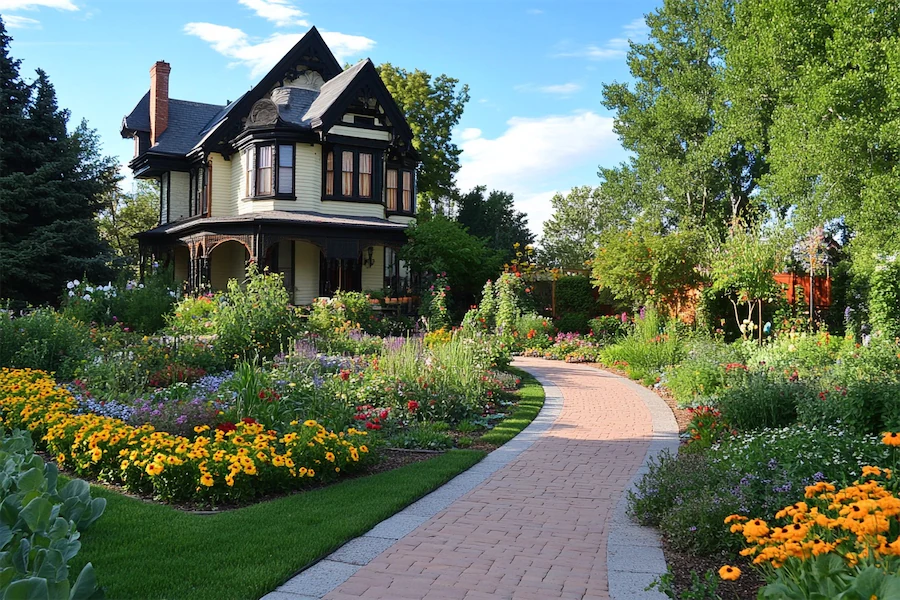A Victorian garden reflects the opulence and eclectic tastes of the 19th century, characterized by intricate designs, exotic plant collections, and ornate architectural elements.
History and Origins of Victorian Gardens
The Victorian era (1837–1901) was marked by industrial progress and global exploration, leading to the introduction of diverse plant species from around the world into British gardens. Advancements in glasshouse technology allowed for the cultivation of exotic plants, further enriching garden designs. Public parks and private gardens became symbols of status and horticultural enthusiasm, with designs often blending formal geometric layouts with naturalistic elements.
Key Features of Victorian Gardens
Victorian gardens are distinguished by several hallmark features:
- Carpet Bedding: This technique involved planting low-growing, colorful plants in intricate, often symmetrical patterns to create vibrant floral displays.
- Exotic Plant Collections: The era’s fascination with botany led to the inclusion of rare and unusual plants, showcased in conservatories and throughout the garden.
- Ornamental Structures: Elements such as wrought-iron gates, gazebos, fountains, and statues added elegance and focal points within the garden.
- Formal Layouts: Many gardens featured structured designs with terraces, parterres, and neatly edged lawns, often complemented by topiary and manicured hedges.
- Rockeries and Ferneries: Inspired by the Victorian passion for ferns and alpine plants, rock gardens became popular, incorporating stones and plants to mimic natural mountainous landscapes.
Applications of Victorian Garden Design
Victorian garden principles can be applied to modern landscapes to evoke historical charm:
- Restoration Projects: Historical estates and public parks often restore Victorian gardens to preserve cultural heritage and educate visitors about 19th-century horticultural practices.
- Residential Landscaping: Homeowners may incorporate Victorian elements, such as ornate fencing, period-appropriate plantings, and decorative structures, to add timeless elegance to their gardens.
- Public Spaces: Municipal parks and botanical gardens might feature Victorian-inspired sections, showcasing the era’s design aesthetics and plant varieties.
Considerations When Creating a Victorian-Inspired Garden
To design a garden reminiscent of the Victorian era, consider the following:
- Plant Selection: Choose heirloom varieties and species popular in the 19th century, including roses, peonies, and ferns, to achieve an authentic look.
- Structural Elements: Incorporate period-appropriate features like wrought-iron benches, ornate planters, and decorative pathways to enhance the historical ambiance.
- Maintenance: Victorian gardens often require regular upkeep to maintain their formal structures, intricate plantings, and ornamental features.
- Space Planning: Design distinct garden rooms or areas, each with a unique theme or focal point, to reflect the Victorian love for variety and surprise in garden layouts.
Conclusion
Victorian gardens encapsulate a rich blend of formality, exoticism, and ornamental beauty, reflecting the era’s technological advancements and global influences. By understanding their history and key features, one can appreciate the intricate artistry of Victorian garden design and draw inspiration for contemporary landscapes that pay homage to this elegant period.
